A guide to the best places where is Semana Santa celebrated in Spain
Semana Santa in Spain is one of the most important times in the country’s calendar. The Semana Santa holiday is held during Easter week in Spain, with Semana Santa meaning Holy Week.
Not only is Semana Santa in Spain a special religious and cultural festival, but it’s also a key time for tourism as well.
So, where is Semana Santa celebrated in Spain? Every town and city has its own Semana Santa festival to mark the occasion of Easter.
![a pin with a person holding a red candle, Where Is Semana Santa Celebrated In Spain [9 Famous Cities]](https://visitsouthernspain.com/wp-content/uploads/2024/02/2-5-683x1024.jpg)
You, dear reader, support this blog. If you purchase through a link, we earn a small commission. As an Amazon Affiliate, we earn from qualifying purchases.
Pssst…!!?? You can’t get enough of Southern Spain guided? Have a look at my other posts:
Top Cities Where Is Semana Santa Celebrated In Spain
- Seville
- Malaga
- Valladolid
- Barcelona
Where Is Semana Santa Celebrated In Spain – Semana Santa in Andalusia
1. Seville
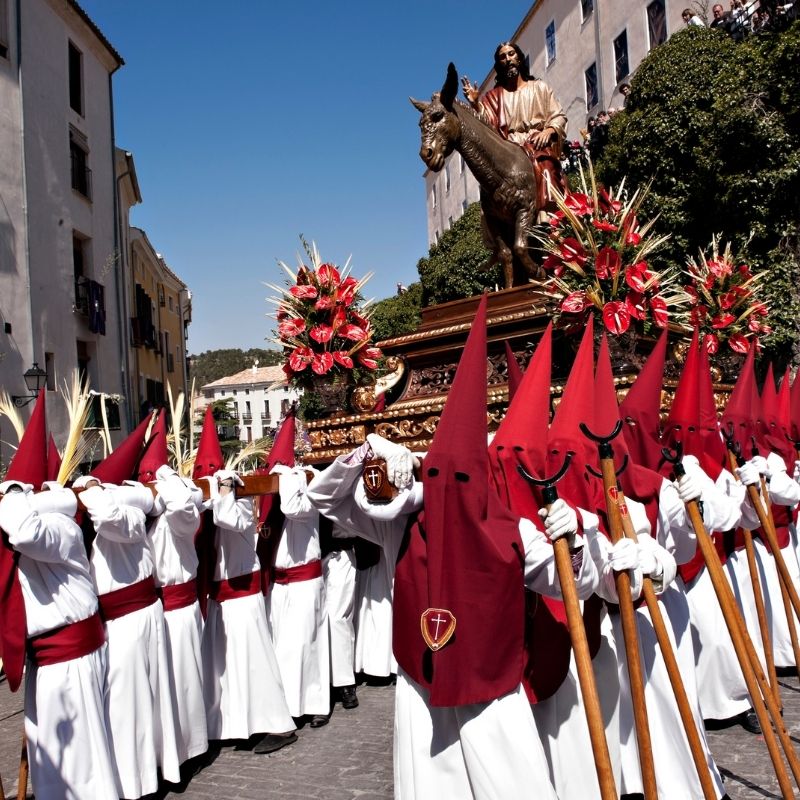
Although the answer to the question “Where is Semana Santa celebrated in Spain” is right across the nation, Semana Santa in Andalucia is something truly unique and special.
Easter Week in Seville is an experience not to be missed, with thousands of visitors from all around the world flocking to the city to celebrate along with the locals.
Here, you’ll find particularly impressive Semana Santa activities thanks to the region’s culturally significant and dramatic Semana Santa traditions.
Easter in Seville gives visitors the chance to sample a taste of the authentic side of Spain.
If you’re planning to spend Holy Week in Spain, you’ll want to know a little more about the history of Semana Santa as well as the different the various Semana Santa traditions in Spain.
So read on to get the answer to the question “How is Semana Santa celebrated in Spain?” and find out the key cities to visit to see the ancient customs of the Holy Week in Spain in all their glory.
Seville’s celebrations are on an enormous scale with a history taking back centuries.
During the entirety of Holy Week, there are processions through the city streets, with floats or pasos carried by the penitents from the city’s tens of brotherhoods or cofradias. Many of the floats are hundreds of years old and weigh around a ton!
There are almost 70 brotherhoods in Seville, with some being especially notable. Los Negritos, Los Gitanos, and El Gran Poder are just three of the best-known and most-followed Cofradias.
Although processions take place every day of Holy Week, the most important take place on Palm Sunday and during the night of Maundy Thursday into the early hours of Good Friday morning.
The Madruga is an especially impressive event to witness, with the women wearing the traditional black lace Mantilla veils, while El Silencio is also dramatic and atmosphere, held by candlelight in complete silence.
2. Granada
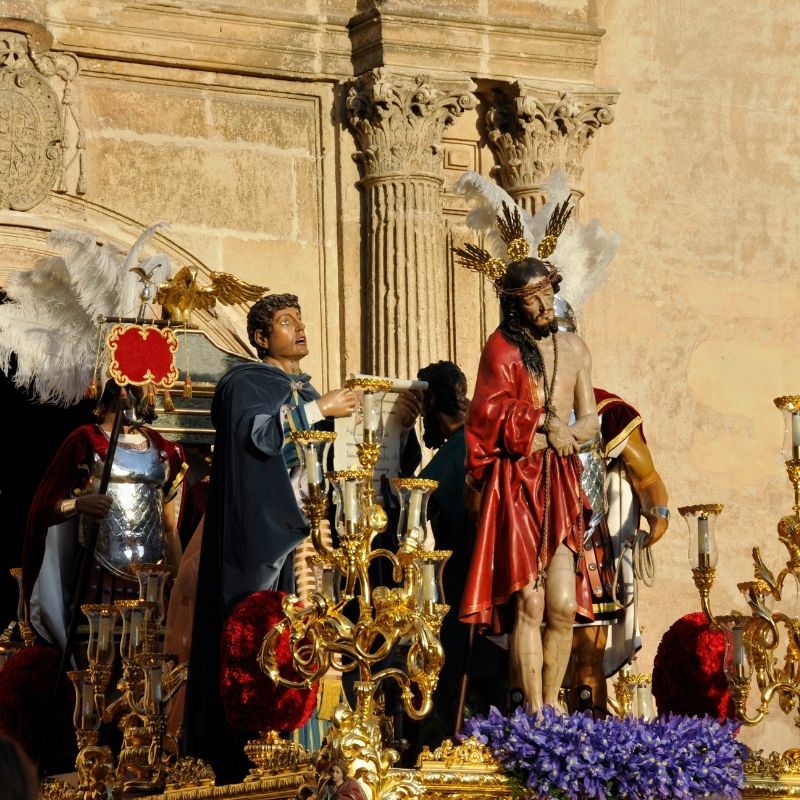
Although Granada’s Holy Week celebrations are on a smaller scale than those in Seville, they’re no less impressive and have many unique features due to the fusion of Moorish and Christian traditions in this part of Spain.
As all the celebrations play out with the amazing backdrop of this historic city, they’re even more atmospheric, too.
One unusual feature of Semana Santa in Granada is the Cristo de los Gitanos procession, which sees huge bonfires burning in Sacromonte and dancers accompanying the parade.
The Albaicin’s narrow streets are also a must-see in the early hours of Good Friday morning, with the statutes of the three neighborhood Virgins and the Cristo del Silencio procession, which takes place in silence apart from the beating drum. Check the guided tour in Sacromonte and Albaicin here.
An especially striking moment during Granada’s festivities is the Soledad de San Jeronimo’s procession, which sees Las Chias dressed in embroidery and feathers heading a procession of Roman troops and drum.
These strange but stunning sights offer their own answer to the question, “How is Semana Santa celebrated in Spain?”.
3. Malaga
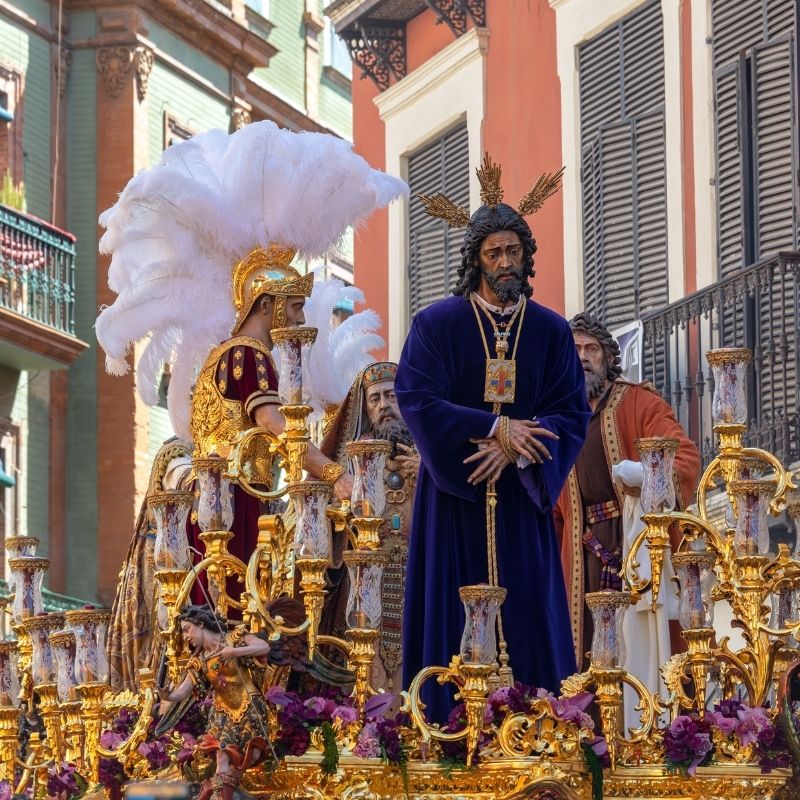
Although Malaga is best known as a summer holiday destination, there’s a lot more to the city than just beaches and tourists, especially during Easter week.
If you’re asking the question, “What is Semana Santa?” You’ll get your answer in the form of Malaga’s vibrant processions and thrilling festivities.
As the Costa del Sol’s capital city, Malaga is home to some of the most impressive parades and, unlike those in many other places in Spain, and even in other parts of Andalucia, they are not solemn or meditative but rather joyous, noisy and cheerful.
It’s not unusual to see people applauding when the floats pass by, and you’ll hear flamenco saetas being sung everywhere. – Check out more flamenco tours here.
As part of Malaga’s celebrations, you’ll also witness military parades, singing anthems and playing marches as they go.
One unique element of the holiday that you’ll only witness in Malaga is the release of a prisoner.
This tradition dates back to Charles III’s reign and involves one of the statues, Jesus el Rico, blessing a prisoner who will then join the procession through the streets.
Where Is Semana Santa Celebrated In Spain – Castile and León
Although some people might answer “Andalucia” when asked the question “Where is Semana Santa celebrated in Spain?” that doesn’t mean that festivities don’t take place in other regions of Spain.
Castile and Leon also host their own celebrations, although the tone is far more solemn than that of the events in Andalucia.
4. Valladolid
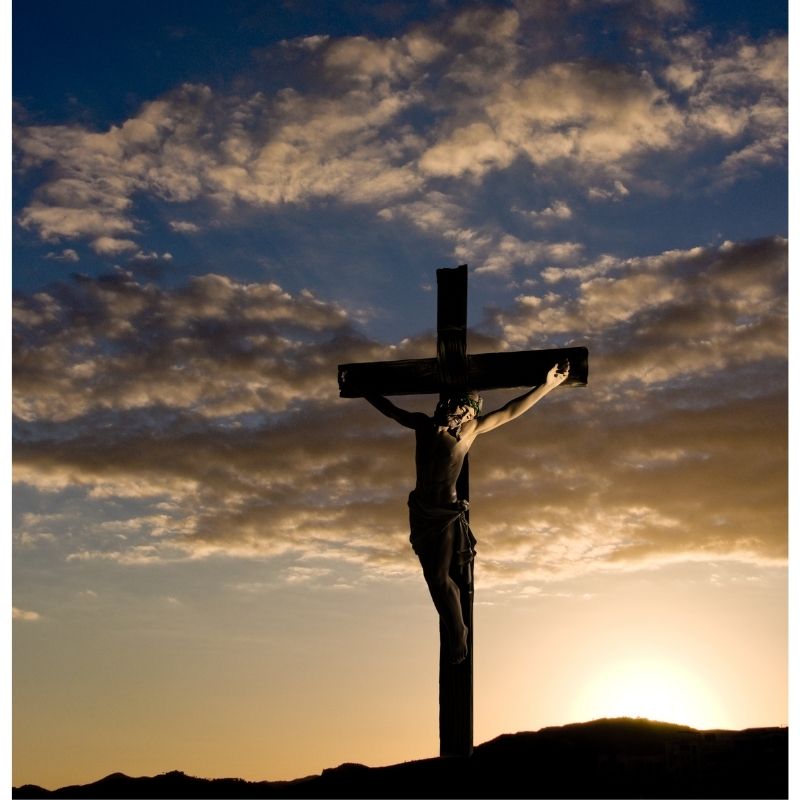
Holy Week in Valladolid features some truly unique moments that cannot be experienced anywhere else.
On Good Friday, for example, brotherhood members riding on horses make proclamations through the city, while in the Plaza Mayor Square, the Sermon of the Seven Words is read aloud.
Good Friday is also the day on which the Passion Procession is held, made up of no less than 31 statues dating from the 1500s and 1600s by artists such as Gregorio Fernandez and Juan de Juni.
You’ll also be able to witness Valladolid’s theatrical performances, dramatically illustrating the Passion story.
5. Salamanca
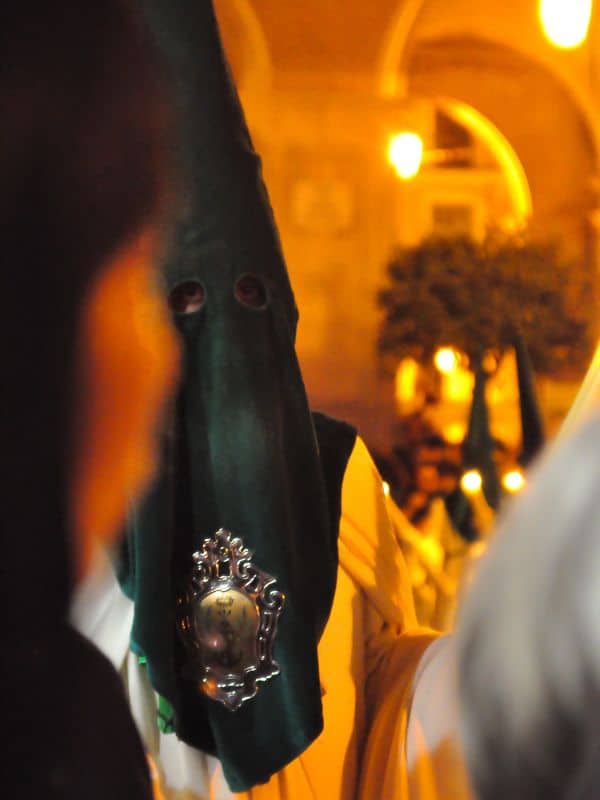
Salamanca’s Holy Week celebrations see over 20 different paso processions, each one accompanied by its ancient wooden sculpture of either the Virgin Mary or Jesus, and countless penitents, all carrying crosses, candles, or flags.
Perhaps the most impressive thing about Semana Santa in Salamanca is the stunning backdrop to the festivities.
The city’s beautiful architecture, which earned it its UNESCO-listed status, shouldn’t be missed, while the pasos themselves have artistic value.
Many were made by world-renowned Spanish sculptors like Luis Salvador Carmona, Alejandro Carnicero, and Mariano Benlliure.
Where Is Semana Santa Celebrated In Spain – Catalonia
There is no single answer to the question “What is Semana Santa in Spain?” Since every region and, indeed, every town has its own way of doing things.
In Catalonia, some aspects of the holiday remain the same – you’ll still experience processions and pasos, but the festivities take a slightly different form in modern cities like Barcelona.
6. Barcelona
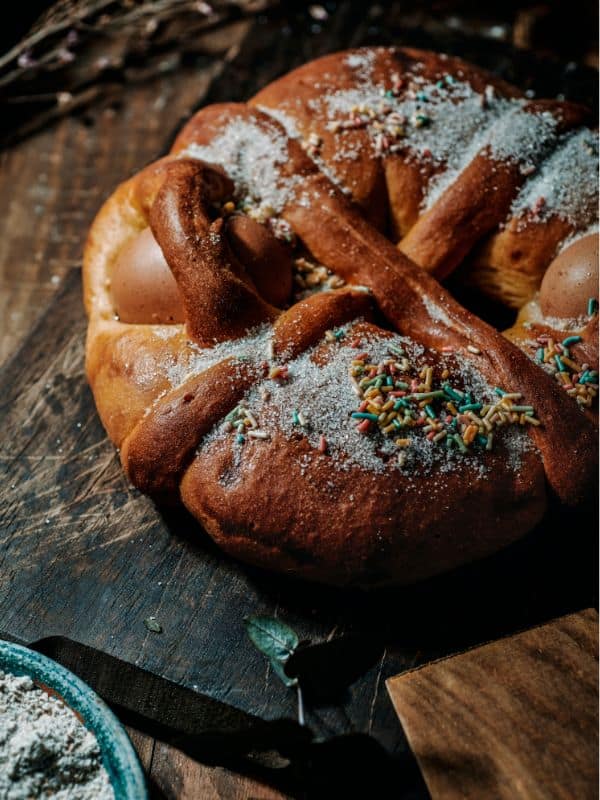
You’ll find Easter in the city of Barcelona being celebrated in a less distinctive way than you’ll see in southern parts of Spain.
Nevertheless, you’ll find several Easter processions taking place, as well as mass in English at the Sagrada Familia, which will answer the question, “What is the history of Semana Santa?”
One special and unique element that you’ll notice in Barcelona is the Palm Fair and the blessing of palms, which takes place on Palm Sunday on the Rambla de Catalunya.
Here, you’ll find palm branches, laurel branches, and woven palm leaves, which are traditionally given by godparents to godchildren when they are taken to the church for a blessing.
Afterwards, the children hang them from their balconies to bring them good luck, so you’ll see plenty of them during your visit to the city.
Many of the celebrations in Barcelona center around Semana Santa food. Just like in other parts of Europe, people here give chocolate bunnies and eggs, but other more traditional foods are given and shared at Easter.
Mona de Pasqua, or Easter cake, is commonly eaten at this time of year and may feature either classic chocolate eggs or figures representing football players or cartoon characters.
Another cultural event that takes place at the famous Sagrada Familia is the light show, which represents Christ’s Passion during Holy Week.
It’s a wonderful way to experience one of the city’s key landmarks while also celebrating the meaning of Easter.
Where Is Semana Santa Celebrated In Spain – Other Notable Cities
7. Madrid

No city in Spain doesn’t have its own form of Semana Santa celebration, so of course, you’ll find processions in Madrid to mark the occasion.
The nation’s capital fills up with thousands of tourists and locals who watch the processions and revel in the atmosphere.
Good Friday’s Cristo de Medinaceli procession is the most popular, although, for overseas visitors, the silent procession is often the most unusual and moving.
Madrid is also the perfect place to sample some traditional Spanish Easter foods like sweet Torrijas or potaja de garbanzas.
8. Toledo
Toledo is a magical city with a long and illustrious heritage, so it’s an ideal place to experience Semana Santa.
Here, you’ll find some of the most impressive processions in all of Spain thanks to the amazing and historic architectural backdrop of the city.
Holy Week begins earlier in Toledo than in other Spanish cities, with processions taking place a full eight days before the start of Semana Santa.
The major processions take place during Holy Week itself, of course, with concerts and a passion re-enactment also forming part of the festivities.
Maundy Thursday is specially packed with events – not only the overnight processions, which last until after dawn, but also choirs singing inside the cathedral for even more ambiance and atmosphere.
9. Extremadura
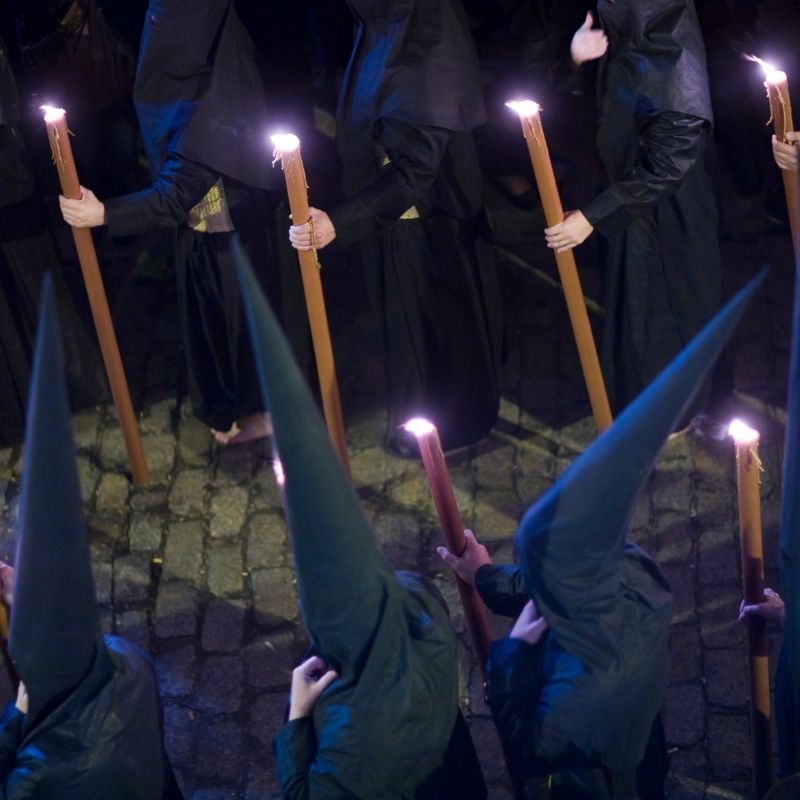
Extremadura is another answer to the question “Where is Semana Santa celebrated in Spain?” In the city of Caceres, you’ll find several unique customs at Easter that make it an ideal time to discover this part of the country.
The Cristo Negro procession is the most famous and most visited event in Holy Week, taking place on Holy Wednesday night and into Maundy Thursday’s early hours.
Dating back to the 1300s, this statue is the centerpiece of the solemn and silent ceremony, which is performed by silent brothers in black tunics and with covered faces.
The key moment of this ceremony takes place at midnight, when the mayordomo knocks three times on the Concatedral de Santa Maria’s door, breaking the silence.
Tips for Experiencing Semana Santa Celebrations
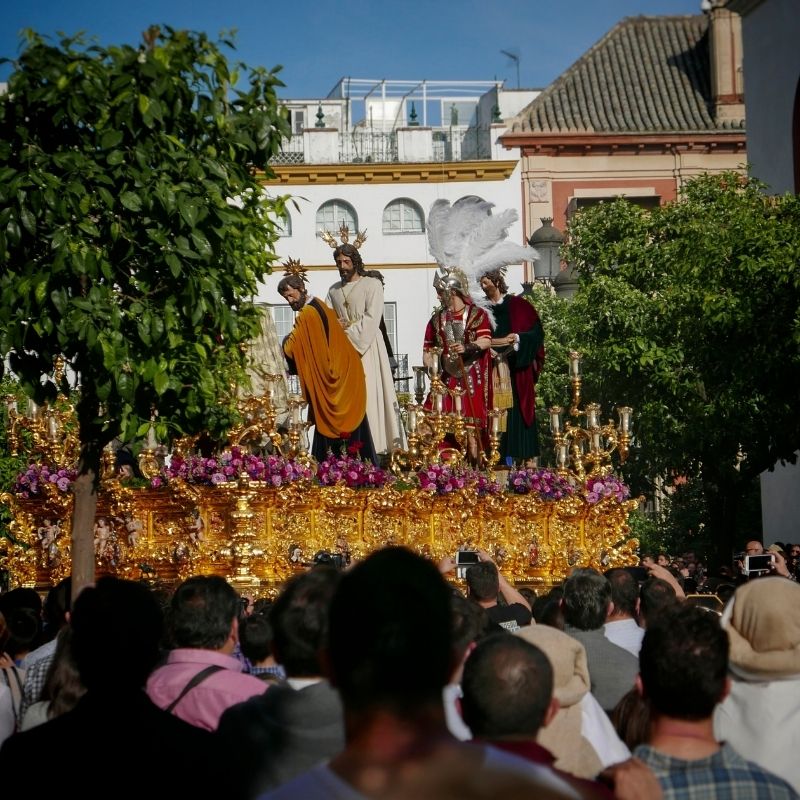
If you’re planning to visit Spain during Holy Week, the first question you need to know the answer to is, “When is Semana Santa celebrated?”
There is no single answer to this since the date moves every year, and Easter could be at any time between March and the end of April.
It’s important to find out when the events are being held so that you can arrange your travel accordingly.
Bear in mind that Semana Santa is one of the busiest times to visit any part of Spain.
Not only is it a school holiday period, which means more people will be traveling on holiday, but it’s also a world-famous destination for the unique nature of its Easter celebrations.
Therefore, you’ll need to book your accommodation and travel well in advance.
Once you’ve arranged your break, you’ll need to plan your activities. Although each city has a lot going on throughout Holy Week, you’ll have to resign yourself to the fact that it’s simply impossible to see and do everything.
You’ll need to decide what your must-sees and must-dos are and plan accordingly.
You’ll be able to find a schedule of activities online before you travel, so you can decide which processions you don’t want to miss.
Check out the routes that the processions will be travelling and plan ahead for when you intend to arrive.
Remember that the biggest and most important processions are extremely popular with visitors, and if you arrive late, you won’t be able to find a space.
In cities like Seville, it’s often possible to pay to rent a space on one of the balconies overlooking the city streets so that you can get an uncrowded bird’s eye view of the processions as they pass.
While this is a good option if you don’t like crowds, it’s an expensive one, and you’ll need to book well ahead since these spaces are in high demand.
One crucial thing to keep in mind when visiting any Spanish city during Easter week is to be respectful of local customs and to abide by the appropriate etiquette.
Holy Week may be a celebration and a holiday, but it also has vital religious and cultural significance. You must, therefore, show respect at all times.
Make sure to wear suitable clothing when you watch the processions, especially on Palm Sunday when locals tend to wear their best clothing.
While there’s no need to dress up in your finery as a tourist, you should avoid wearing ripped jeans or t-shirts with offensive slogans and choose something sober and appropriate instead.
You should also refrain from saying anything that could be construed as offensive or rude.
No matter which city you’re visiting, the most important processions take place on Palm Sunday, Maundy Thursday and Good Friday, and you should try not to miss the key events like the Silent Procession which offer the most authentic and moving experiences.
If you’re in Granada or Seville, the gypsy processions are must-sees, while the Madruga is another event that is not to be overlooked.
Conclusion on where is Semana Santa celebrated in Spain
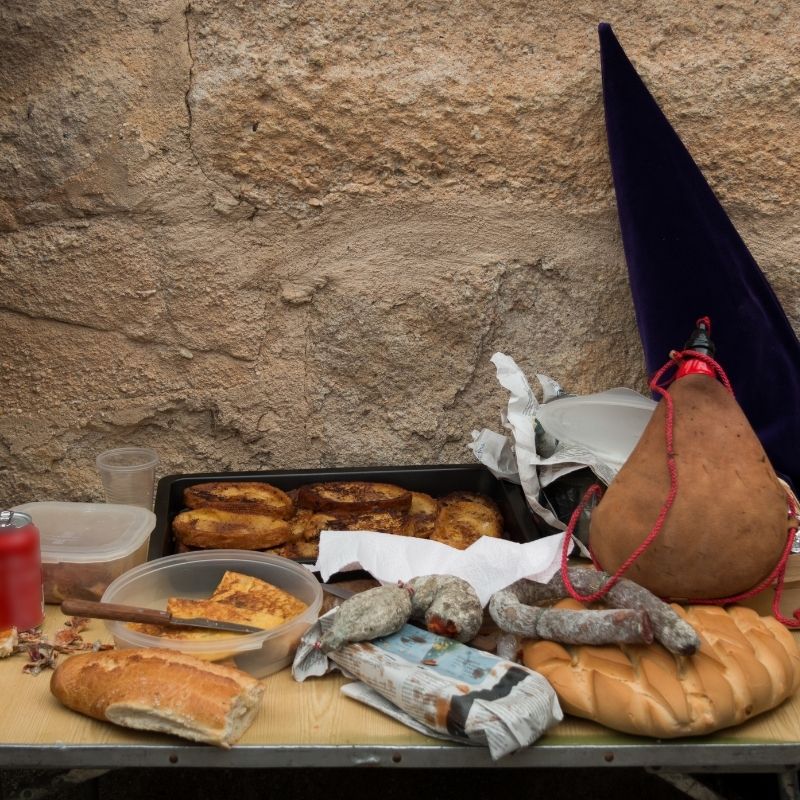
So, now you know the answer to the question “Where is Semana Santa celebrated in Spain?” and you also have a better insight as to the types of events that you can expect to experience if you head to a Spanish town or city during Easter Week.
Although Holy Week is a holiday of religious significance, you can still enjoy the experience if you aren’t religious yourself.
The historical and cultural elements of the processions are, in themselves, well worth seeing.
In fact, only 18% of Spanish people are actively practising Catholics, yet they turn out in droves to participate in the Easter celebrations!
If you want to have a true taste of the real Spain and to get an in-depth look at the country’s heritage and cultural background, there’s no better time to visit than during Easter.
Not only will you experience some amazing and unique sights, but you’ll also be able to try some traditional Spanish Easter foods and enjoy some moving and highly memorable moments that will stay with you throughout your lifetime.
FAQ about where is Semana Santa celebrated in Spain
Semana Santa Food, Where Is Semana Santa Celebrated In Spain
Although every city in Spain has its own Semana Santa celebrations, some of the most impressive can be found in Seville.
There are some truly spectacular processions here, and you’re sure to be amazed by the sheer scale of the festivities.
Where are the biggest Semana Santa celebrations?
Not only is Seville the best place to experience Semana Santa, but it’s also home to the biggest Easter celebrations.
The city is world-famous for its Holy Week events and processions, so if you’re going to head to Spain at this time of year, Seville in Andalucia is the place to go!
![a pin with pasos being carried in Spain, Where Is Semana Santa Celebrated In Spain [9 Famous Cities]](https://visitsouthernspain.com/wp-content/uploads/2024/02/7-683x1024.jpg)
![a pin with processions being held in Spain, Where Is Semana Santa Celebrated In Spain [9 Famous Cities]](https://visitsouthernspain.com/wp-content/uploads/2024/02/15-683x1024.jpg)
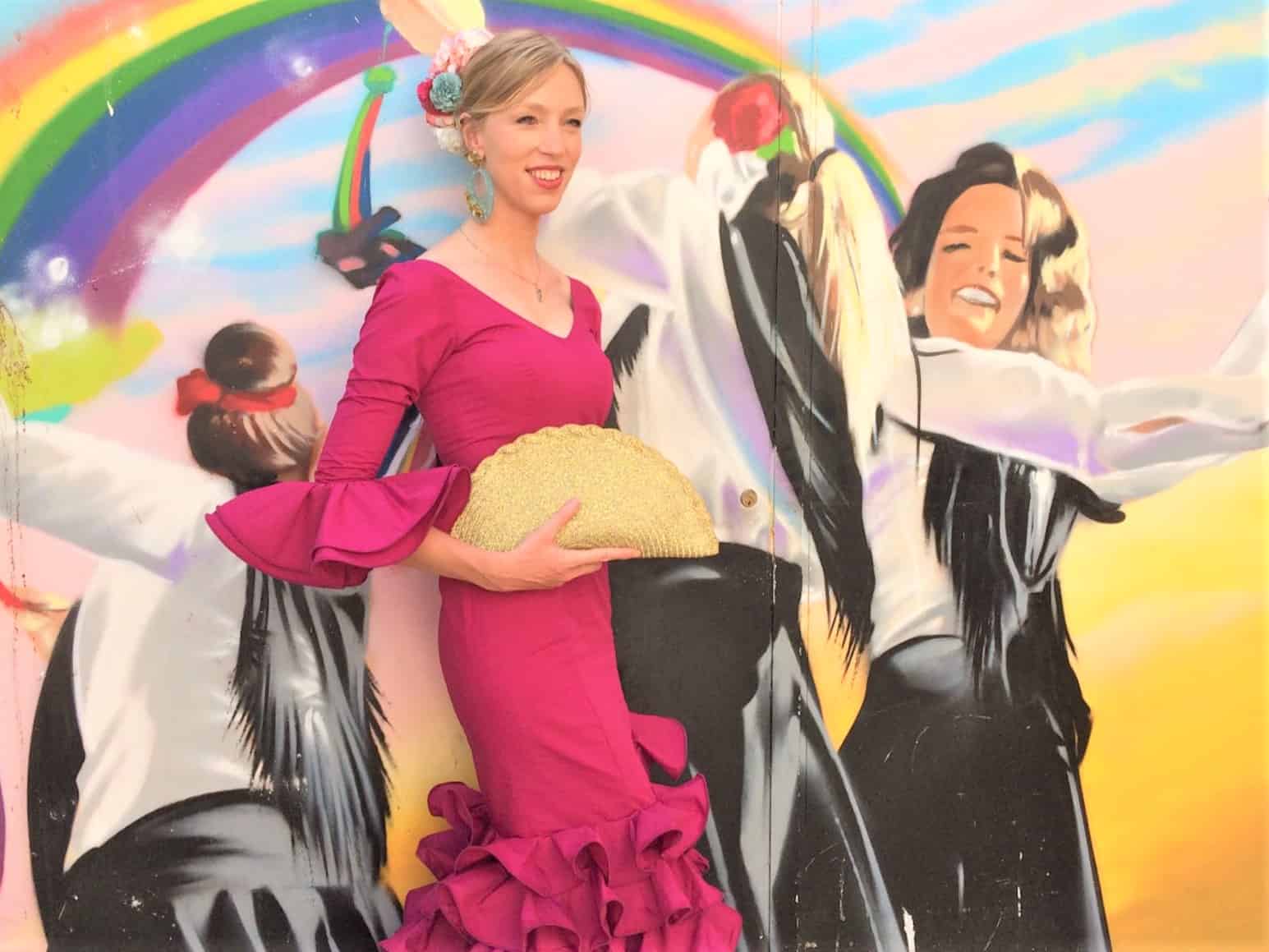
Hola, I’m Paulina! Together with my team, we are passionate about Southern Spain. Here we share all you need to know for great times in Southern Spain with the best places to visit, stay and, of course, the best food to eat.
Let’s dive in and explore Southern Spain’s outdoors, food and culture con pasión!

![a pin with red hooded people during Semana Santa in Spain, Where Is Semana Santa Celebrated In Spain [9 Famous Cities]](https://visitsouthernspain.com/wp-content/uploads/2024/02/1-11-683x1024.jpg)
![bf8494ef7bae2432a1c38b5a578c4b16e564bbad - Where Is Semana Santa Celebrated In Spain? [9 Top Cities]](https://bucket.mlcdn.com/a/1958/1958864/images/bf8494ef7bae2432a1c38b5a578c4b16e564bbad.jpeg)